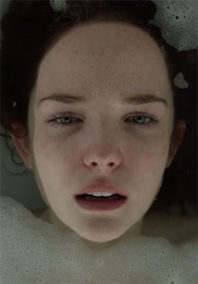
Watching Alexander Carrier’s theatrical feature debut Jade’s Asylum less than a week after seeing Ari Aster’s Midsommar, is without a doubt peculiar sensation of déjà vu. Both films feature young female protagonists with emotionally abusive boyfriends and haunting pasts, who must reconcile with said pasts while on vacation in a faraway land. Unfortunately, whereas Aster’s film is a beefy two and a half full hours, Carrier’s is a waifish eighty-three minutes and barely so.
Carrier’s film is clearly an ambitious one. Jade’s Asylum attempts to balance multiple stories, each interwoven into each other through flashbacks and cross-editing. It is impossible to temporally pin down any given scene with the film, and multiple viewings would probably be necessary to fully piece together the exact course of the titular Jade’s (Morgan Kohan) journey. This is a difficult story structure, however, it is one that needs time and care to fully form. Carrier is perpetually revealing details, and each new one feels rushed. Another ten to fifteen minutes to slow down the dissemination of plot point after plot point, would have done Jade’s Asylum many favours.
Furthermore, it seems as if the film is uncertain of its designed intentions. On many an occasion, ghostly camerawork swooshes through the surrounding forest. Sam Rami’s classic The Evil Dead is the clear reference point here, but this feels at odds with the rest of the film, a psychological horror film about repressed trauma. Is this film supposed to inspire thrills, or mental dread? Is it secretly an allegory? Is it actually a Tarantino film (there are numerous chapter titles)? Audience may ultimately walk away from Jade’s Asylum with more questions than answers, yet, with little desire to pursue the solutions anytime soon.

